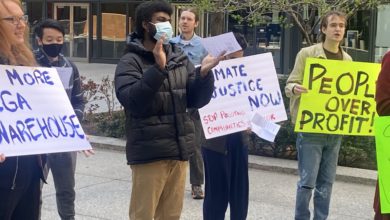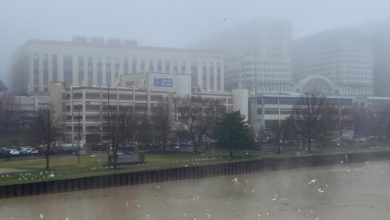On November 25, 2022, the fire department of Moody, Alabama, responded to a large blaze at a landfill operating under the name Environmental Landfill, Inc. The site is designated a “green waste” landfill, which means it is only supposed to accept organic material considered non-hazardous.
However, a report by the Alabama Department of Environmental Management shows that the site has been accepting hazardous material such as old tires, asphalt waste and various construction debris, all of which is toxic to burn.
Firefighters and foresters were able to contain the fire, but not put it out. Ultimately the site burned for at least four months, causing the air quality in Moody and surrounding areas to reach what the Environmental Protection Agency deemed “hazardous” status. Residents near the landfill had to be evacuated until the air was considered safe to breathe.
Unenforced environmental regulations
In January 2013, ADEM claimed to have only observed piles of tree cuttings and vegetative debris on the Environmental Landfill, Inc. site. However, in November of that same year a complaint was filed, causing ADEM inspectors to issue a “notice of violation” to the property owner, describing the area as an “unauthorized solid waste dump.” At the time, ADEM took no further action regarding the discovery of unauthorized waste on the site.
Nine years later, in November 2022, nearby residents filed a class-action lawsuit against the owners of the landfill. Meanwhile, ADEM has still refused to take any kind of significant action on behalf of the people filing complaints.
ADEM has come under criticism for years for its refusal to enforce environmental regulations. The organization is actually made up of volunteers who have been appointed by Alabama government officials. Most of these volunteers have ties to the very local businesses which ADEM is supposed to monitor for environmental safety.
As a result, ADEM does not routinely check regulated businesses for compliance — instead they rely on self-compliance, i.e., the businesses telling on themselves. Generally, the only way ADEM finds out about environmental safety violations is through third party reports, such as the complaints filed by residents living around the Environmental Landfill, Inc.
Local residents pay the price
Locals have taken to social media to voice complaints, with some organizing protests demanding more be done about the situation. “The plants in front of our house died,” said local resident Teresa Palmer to Liberation News. “Every time I drive through Blackjack and Annie Lee Road the smell makes me nauseous.”
The EPA air testing around the area of the fire have shown actionable levels of both carbon monoxide and hydrogen sulfide, ultimately causing Governor Kay Ivey to declare a state of emergency for St. Clair county.
Not only is the air in the area polluted, but the runoff from the dump is flowing into the Cahaba River. The Cahaba is the primary water source for the immediate area surrounding the fire, as well as for nearby Birmingham, the most populated city in the state.
David Butler, the staff attorney for the Cahaba Riverkeeper, in an interview with Liberation News, expressed concern over the lack of enforcement from ADEM to combat pollution in the state: “They don’t have the motivation to fix problems, but instead to protect business.”
According to the Riverkeeper, the landfill was simply a “disposal site,” which lacked proper permitting, and was not being monitored by ADEM or any other outside entity.
Forever chemicals found in local waterways
Despite ADEM’s claims that local waterways were not impacted, the Cahaba Riverkeeper conducted three rounds of their own testing at the point of runoff.
These tests showed elevated levels of dangerous chemicals such as methylphenol, dimethylphenol, and bisphthalate, all of which are carcinogens linked to chronic health issues and birth defects. The amount of these dangerous manufactured chemicals present in the samples taken near the landfill was higher than any ever taken from a water source in the United States. These chemicals are also likely present in the smoke that was produced from the fire, traveling through the air and eventually settling on the ground around where the smoke blows.
Butler insists that if they had knowledge of how this landfill was operating even 10 years ago they could have been working to minimize the damage to the river. ADEM has dismissed the concerns of Riverkeeper by insisting that PFAS already exist in the water supply and further contamination should not be a concern.
ADEM Director, Lance LeFleur, continues to insist that they are going above and beyond what is required of them in the situation, but it is clear that what ADEM considers above and beyond is not adequate to prevent environmental disasters like the one in Moody.
While ADEM has demonstrated that it is only interested in protecting businesses, not the environment, Alabama residents and organizations have shown that they will continue to build the struggle for environmental justice and safety in their community.






